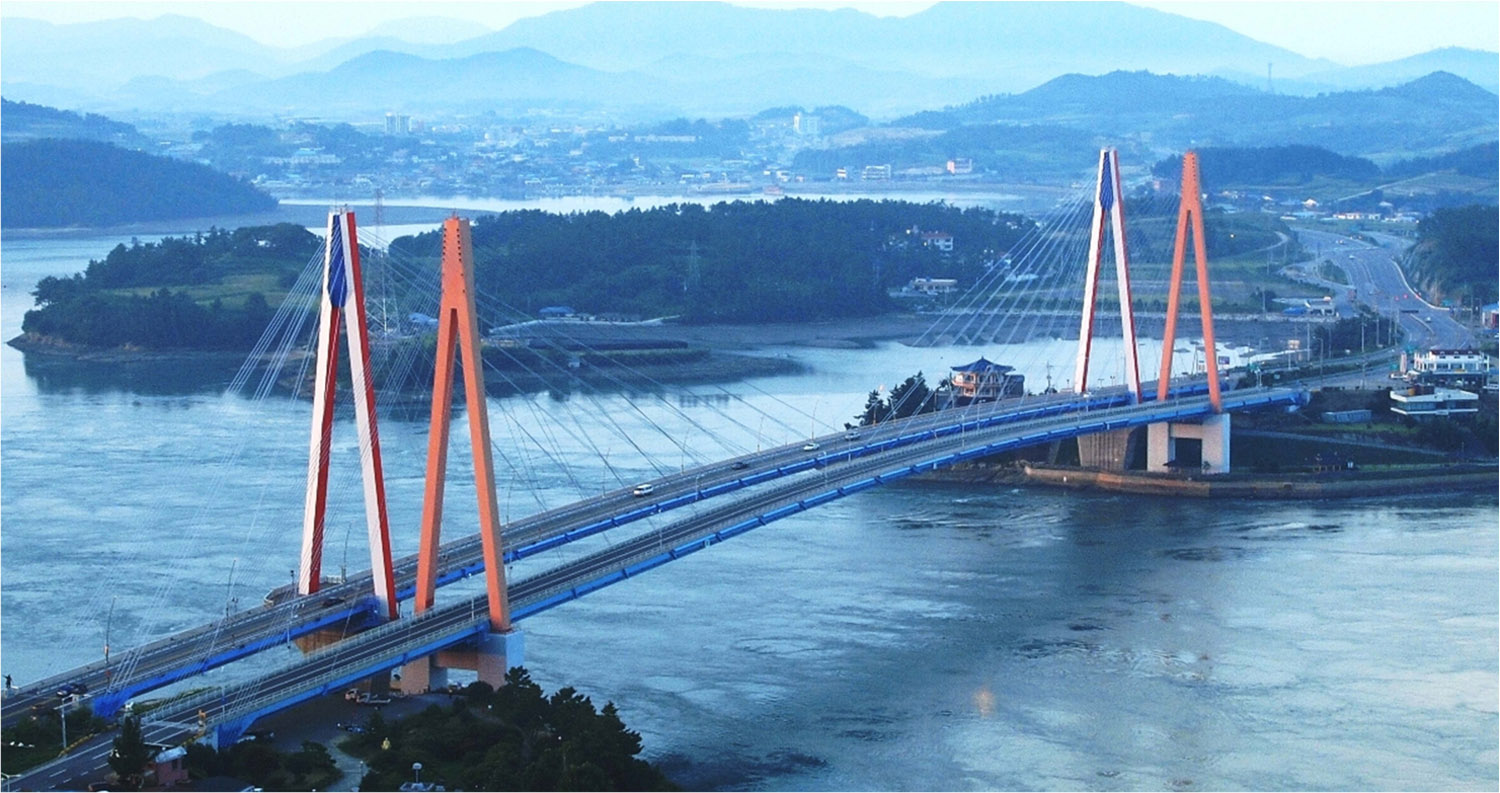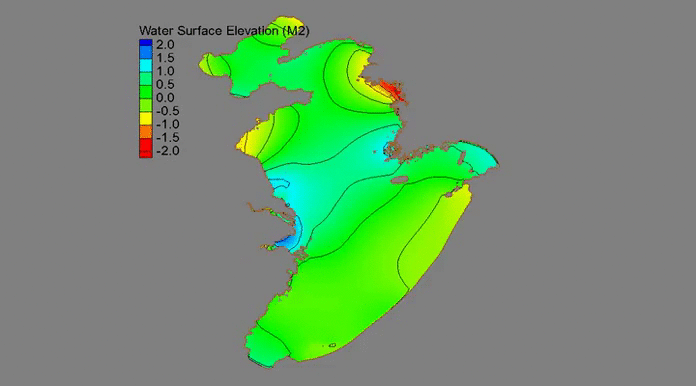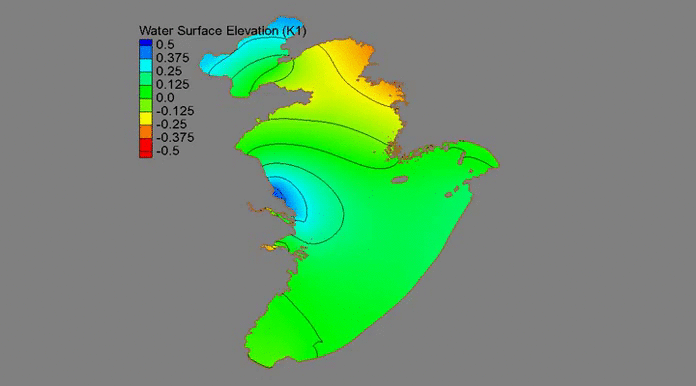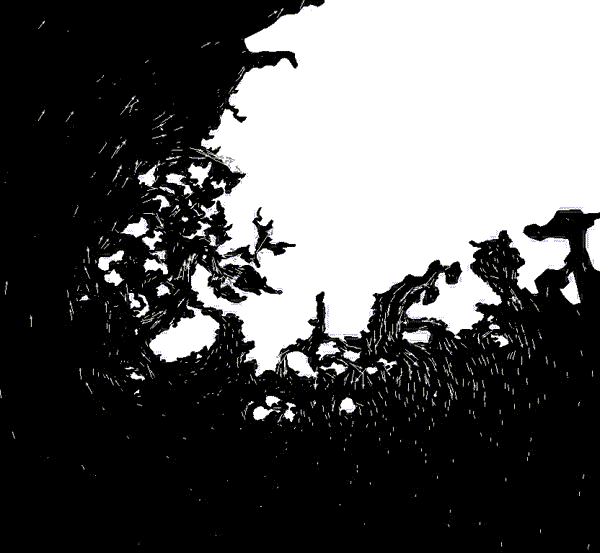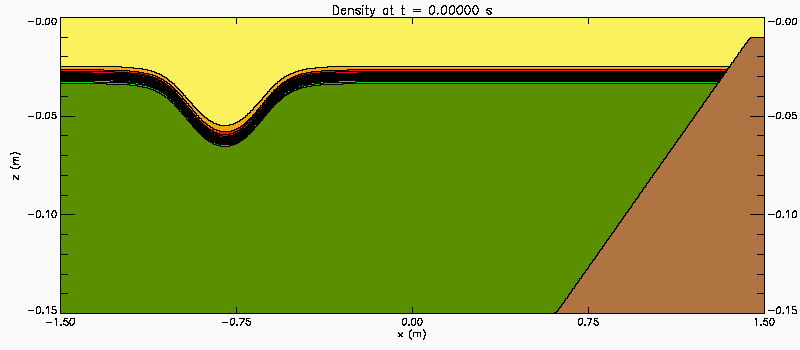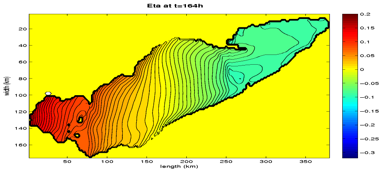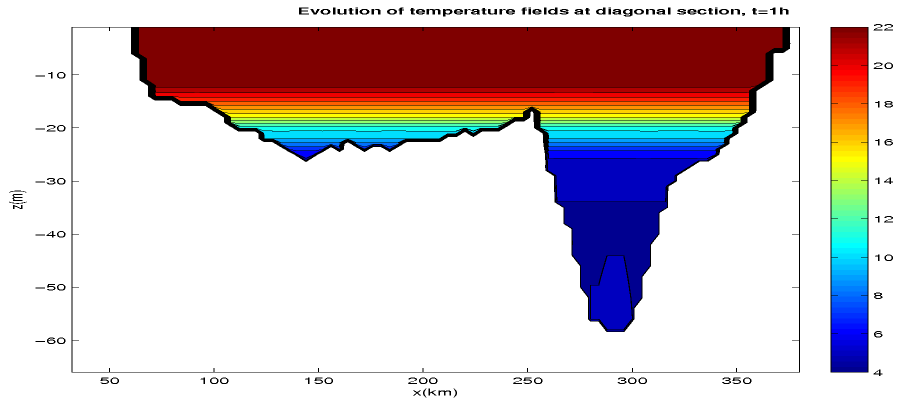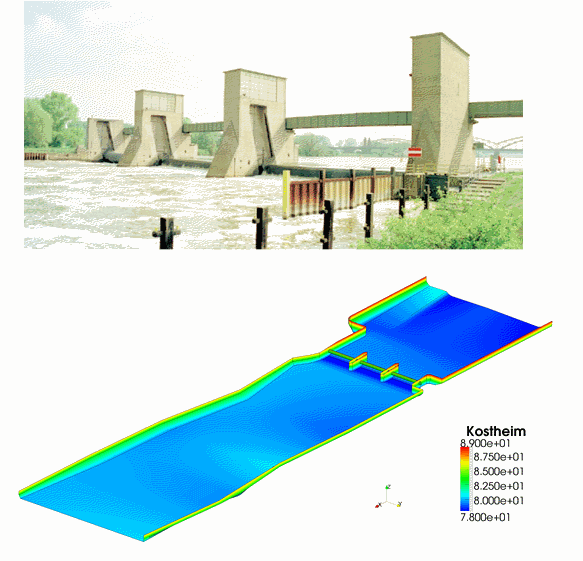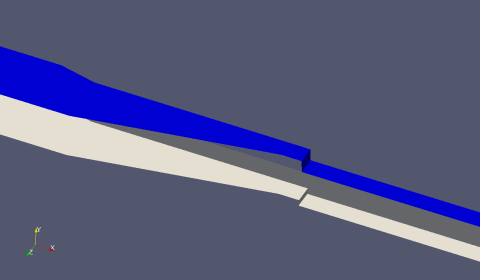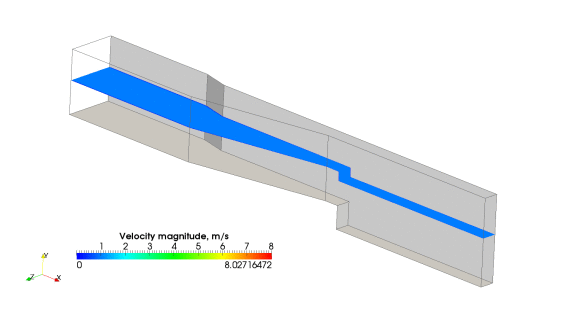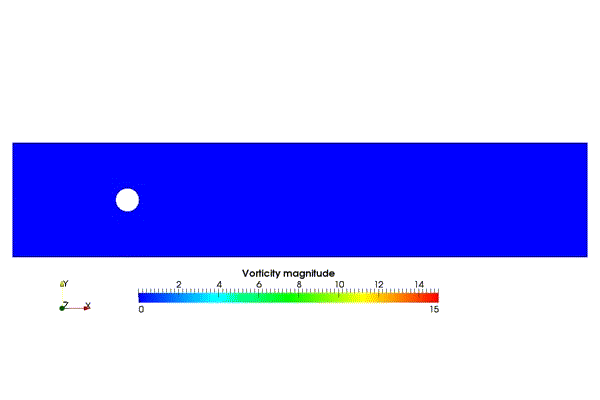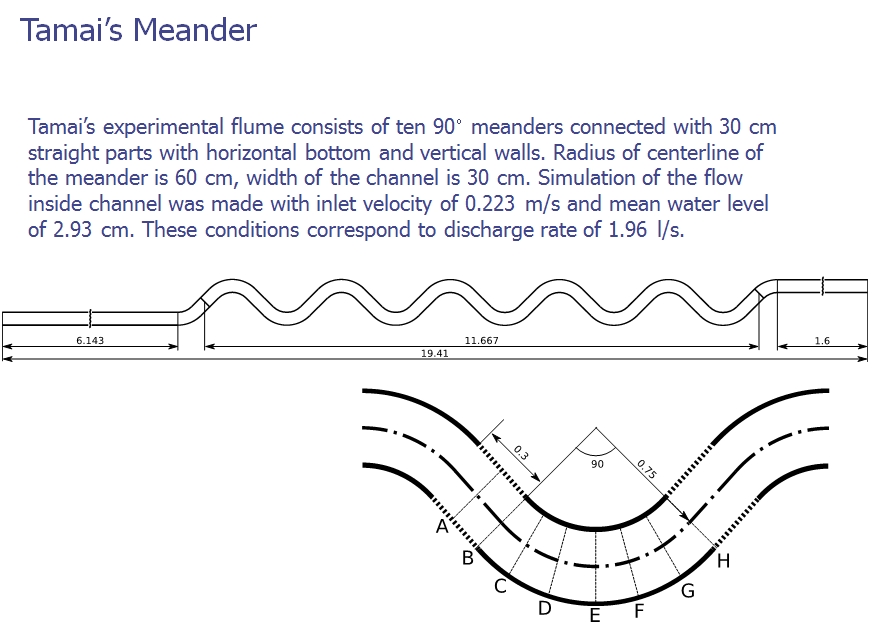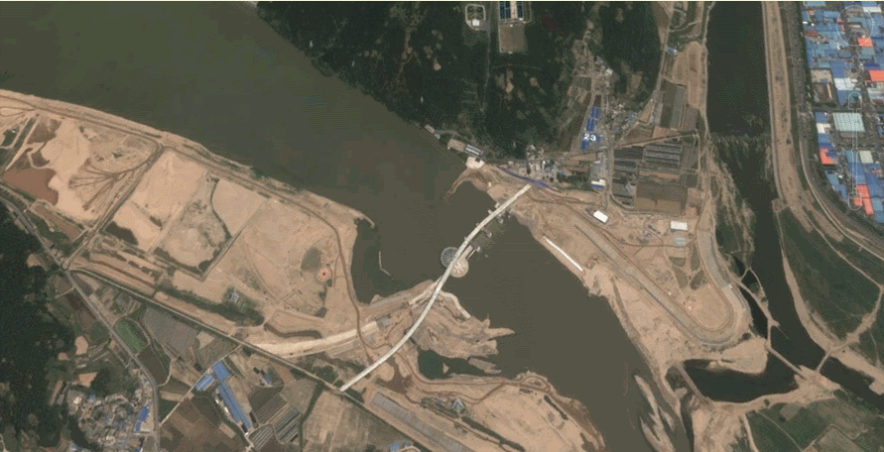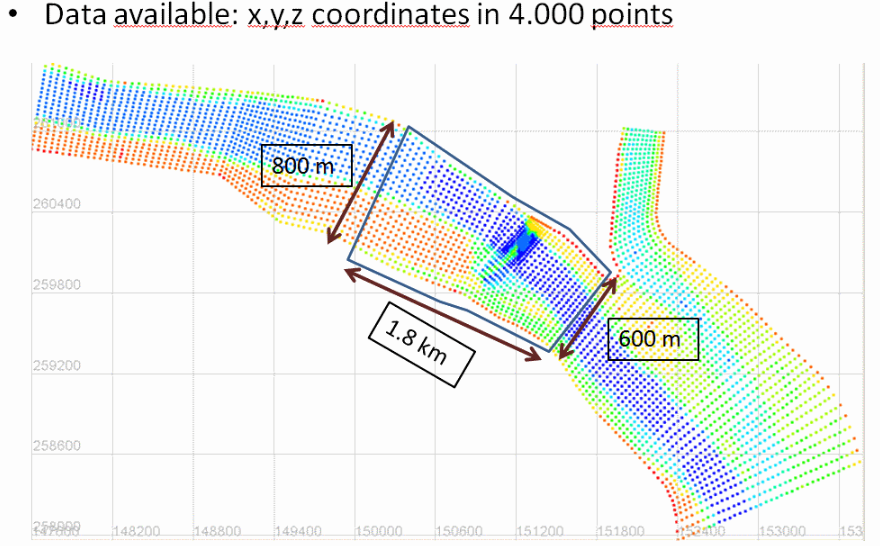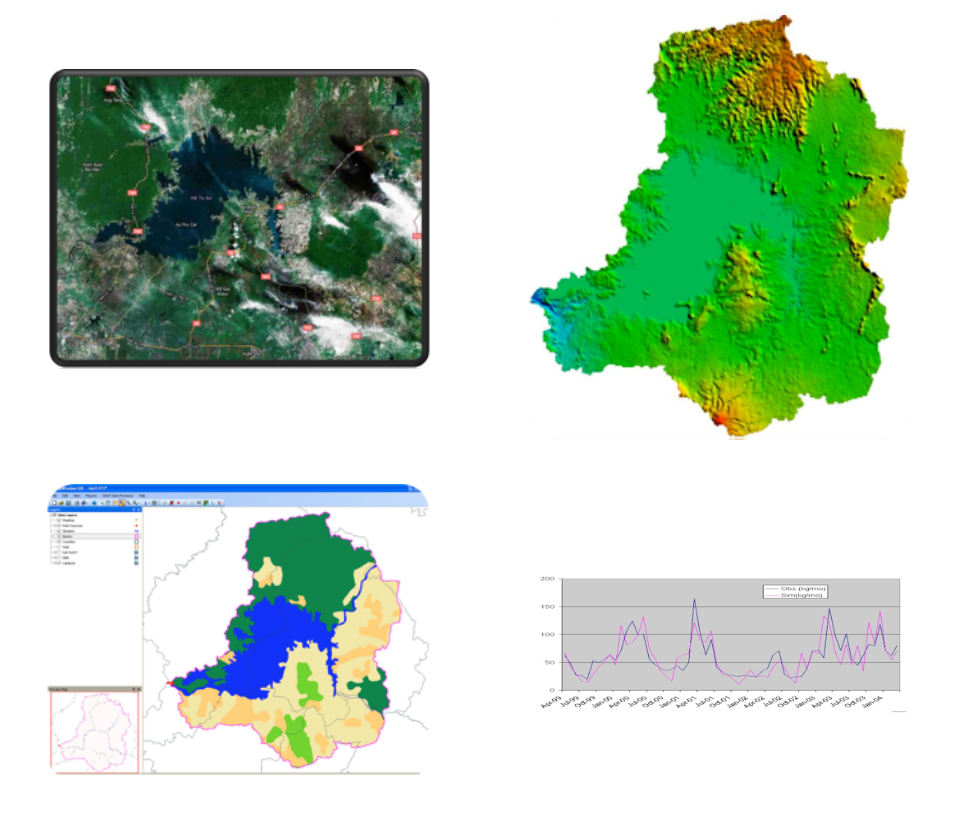Education:
- Ph.D. (Dr.-Ing.) in Hydraulic and Water Resources Engineering at the University of Karlsruhe (KIT), Germany (summa cum laude).
- Dipl. Math. (MSc. equivalence) at the University of Karlsruhe (KIT), Germany.
Research Areas:
- Hydraulic and Water Resources Engineering: Environmental, turbulent, multiphase and stratified flows and transport processes in water bodies (channels, rivers, lakes, estuaries, oceans and aquifers), hydrological processes, nonlinear internal waves.
- Computational/Environmental Fluid Dynamics for different length scales from micro- to geophysical fluids: Modeling, algorithm development, numerical analysis and applications in environmental, hydraulic and water resources engineering.
- Computational Sciences: Computational mathematics, code development, data analysis and hydroinformatics, High Performance Computing (HPC), Geographical Information Systems (GIS), Inverse Problems.
Employment History:
Academic Experience
- 09/2011 – present: Assist./Assoc./ and Full Professor at the Department of Civil and Environmental Engineering, Seoul National University, South Korea.
- 10/2009 – present: Adjunct Professor at the School of Engineering, University of Guelph, Canada.
- 01/2009 – present: Co-Founder and Advisory Board of Institute for Computational Science and Technology (ICST), Vietnam.
- 09/2019 – present: Distinguished Professor at Thuy Loi University, Vietnam.
- 07/2017 – 08/2018: Visiting Professor at the Department of Civil and Applied Mechanics, McGill University, Canada.
- 07/2017 – 08/2018: Visiting Professor at the Department of Applied Mathematics, University of Waterloo, Canada.
- 05/2018 – 08/2018: Visiting Professor at the Department of Civil and Environmental Engineering, UC Davis, USA.
- 07/2017 – 08/2018: Visiting Professor at the Department of Mathematics and Statistics, University of Guelph, Canada.
- 06/2004 – 06/2008: PDF at Department of Applied Mathematics, University of Waterloo, Canada.
- 03/2003 – 12/2005: PDF at Department of Mathematics and Statistics, University of Guelph, Canada
- 01/2000 – 12/2002: PDF at the Institute of Hydraulic Engineering and Water Resources Management, University of Karlsruhe, Germany.
Industrial Experience
- 08/2008 – 05/2010: Software Architect at the Greenland International Consulting Ltd., Canada.
- 04/1999 – 09/2001: Research engineer at Federal Waterways and Research Institute of Germany
Awards
- 10/2014: Visiting Fellowship at the Institute for Mathematics and its Applications (IMA), University of Minnesota, USA.
- 08/2008: Visiting Fellowship at the Fields Institute, University of Toronto, Canada.
- 06/2006: Visiting Fellowship at the Institute for Mathematics and its Applications (IMA), University of Minnesota, USA University of Minnesota, USA.
- 2003-2005: NSERC PDF, National Sciences and Engineering Research Council of Canada.
- 1994-1999: Scholarships of German Academic Exchange Service (DAAD) for PhD. Research.
Funding (Selected from last 5 years)
- 12/2020 – 12/2023: “Development of Coupling Atmospheric-Hydrologic-Hydrodynamic Models and Big-Data for Evaluation and Projection of Flow Characteristics, Drought, and Saltwater Intrusion in the Vietnam Mekong Delta in the Context of Climate Change and Upstream Human Interventions”; Joint-Project between Korea and Vietnam Governments. USD 420,000. (PI)
- 2020/06: “Equipment: 2 High Performance Computing Cluster Nodes”, funded by SNU Research Grants, $26,000. (PI).
- 11/2018-10/2021: “Development of a Software Tool for Calculation of Surface Water Runoff and Pollution Transport in Watershed Systems”, funded by National Research Foundation of Korea. USD 150,000., (PI) (Extended period)
- 11/2015-10/2018: “Development of a Software Tool for Calculation of Surface Water Runoff and Pollution Transport in Watershed Systems”, funded by National Research Foundation of Korea. USD 150,000., (PI) (First period)
- 2015/08: “Equipment: 2 High Performance Computing Cluster Nodes”, funded by SNU Research Grants, $20,000. (PI).
- 2013/11-2014/10: “Development of a GIS-based software for calculation of point and non-point sources of pollutions in watershed systems”, funded by SNU Research Grants, $70,000. (PI).
Publications:
Books:
- V. Th. Nguyen, “Three Dimensional Computation of Turbulent Flows in Meandering Channels”, University of Karlsruhe, Germany, ISSN 0176-5078 (2000).
Software Developer:
SNU-Watershed Simulation (SNU-WS) Tool (Copyright protection by Korean Government)
Patents:
Method for analyzing sediment transport using volume of fluid method, Patent Number 10-2024-0004281
Keynote and Invited Talks (selected from last 5 years)
- Plenary speaker at International Conference on Mathematical Modeling for Climate Change and Environment, Vietnam Institute for Advanced Studies in Mathematics, “Numerical Model and Its Applications in Water Resources, Hydraulic and Environmental Engineering”, Hanoi, Vietnam, Oct. 19-23, 2022.
- Keynote speaker at International Conference on Water Resources and Coastal Engineering 2019 (ICWRCE2019), “Numerical Modeling and Its Applications in Water Resources, Hydraulics and Coastal Engineering”, Danang, Vietnam, April 25-26, 2019.
- Keynote speaker at Seoul International Conference on Engineering and Applied Science (SICEAS), “Turbulence Flows: Modelling and Application in Engineering” Seoul, Korea, February 7-9, 2017.
- Keynote speaker at the 4th Asia Symposium on Engineering and Information (ASEAI). “Recent Development and Applications of Computational Fluid Dynamics in Civil and Environmental Engineering” Jeju, Korea, April 19-21, 2016.
- Keynote speaker at Annual Conference of Vietnamese Young Scientists (ACVYS-2016), “Application of Computational Fluid Dynamics in Science and Engineering”, Chung-Ang University, Seoul, Korea, May 29, 2016.
- Keynote speaker at International Conference on Multiphysical Interaction and Environment. “Recent Development and Application of Computational Fluid Dynamics in Water Resources and Environmental Engineering”, Vinh Long Province, Vietnam, March 9-10, 2015.
- Invited speaker at the Fourth International Conference on Computational Science and Engineering (ICCSE-4), Introduction to an Effective GIS-Based Watershed Simulation Tool. July 24-27, 2019, Ho Chi Minh City, Vietnam.
- Invited speaker at Department of Civil and Applied Mechanics, McGill University, Canada; “Numerical Modeling and Its Applications in Water Resources, Hydraulic and Environmental Engineering”; Montreal, Canada, April 17, 2018.
- Invited speaker at International Conference: The VIEW Infrastructure Performance 2017. “Application of Computational Fluid Dynamics for Design, Safety and Maintenance of Hydraulic Structures”, Nov. 11, Seoul, South Korea.
- Invited speaker at Int. Symposium on Water, Feedbacks and Complexity, Korea University, South Korea; “Turbulent Flows: Modeling and Application in Hydraulic Engineering”, May 30, 2017.
- Invited speaker at 9th Joint-Symposium between Hokkaido University and Seoul National University, “Turbulence Model and Its Application in Hydraulic Engineering”, Nov. 24-25, 2016, Hokkaido University, Japan.
- Invited speaker at Institute for Advanced Simulation, Juelich Forchungszentrum, Germany. “HPC, an effective tool for three-dimensional simulations of nonlinear internal waves”, Jun. 30, 2016.
- Invited speaker at Department of Hydraulic Engineering and Water Resources Engineering, University of Kassel, Germany, “Applications of CFD in Hydraulic and Water Resources Engineering”, July 01, 2016.
- Invited speaker at 4th International Symposium on Advanced Technology for River Management, SNU, Seoul, “SNU-Watershed Modeling Tool”. April 21-23, 2016.
- Invited speaker at International Symposium on Clean Water on Demand. “Watershed and Water Quality Modeling”, Ho Chi Minh City, Vietnam, Jan. 20, 2016.
- Invited speaker at the Department of Mathematics and Statistics, University of Guelph, Canada. “Three-dimensional simulation of nonlinear internal waves in the Great Lakes and St. Lawrence Estuary”, Jan. 6, 2015.
- Invited speaker at the SMART Water Grid International Conference. “Numerical Simulation of Hydrodynamics and Sediment Transport around a Hydraulic Structure on a River”, Seoul, Nov. 25-27, 2014.
- Invited speaker at IMA Hot Topics Workshop: Impact of Waves along Coastline. “Numerical Simulation of Tidal Elevation along the West Coast of Korea”. Oct. 14-17, 2014, IMA, Minnesota, USA.
- Invited speaker at 3rd International Symposium on Advanced Technology for River Management. “Numerical simulation of hydrodynamics and bed morphology around Gangjoeng Weir”, SNU, Seoul, Sept. 14-16, 2014.
- Invited speaker at Civil Engineering Leader’s Network (CELeN), KSCE 2013 Convention, “Civil Engineering and Sustainable Future: “A Contrast between Developed and Developing Countries”, Oct. 2013, Korea.
- Invited speaker at the 8th International OpenFOAM Workshop, “Applications of OpenFOAM in Hydraulic Engineering”, June 11-14, 2013, Jeju Island, Korea.
Selected Papers Published in Peer-Reviewed Journals:
- Y.E. Aghdam, H. Mesgarani, Z. Asadi, and V.T. Nguyen, “Investigation and analysis of the numerical approach to solve multi-term time-fractional advection-diffusion model”, American Institute of Mathematical Sciences (AIMS), Mathematics, Vol. 8(12), 29474-29489, 2023 (doi: 10.3934/math.20231509)
- J. Lee and V.T. Nguyen, “Effects of Various Backward Facing Steps on Flow Characteristics and 1 Sediment Behaviors”, Physics of Fluids, 35(6), 2023 (https://doi.org/10.1063/5.0152852). (IF=4.980).
- A.T. Nguyen, V. T. Nguyen, D. Baleanu and V. T. Nguyen, “On the Fractional Diffusion Equation Associated with Exponential Source and Operator with Exponential Kernel”, ASME, Journal of Computational and Nonlinear Dynamics (https://doi.org/10.1115/1.4062198).
- D. N. Khoi1, V.T. Nguyen, P. T. Loi, N. V. Hong, N. T. D. Thuy, D. Q. Linh, “Development of an integrated tool for responding to accidental oil spills in riverine and shoreline areas of Ho Chi Minh City, Vietnam”, Environmental Impact Assessment Review (IF=6.122) (https://www.sciencedirect.com/science/article/pii/S0195925522002530?dgcid=author).
- H. Jafari, Y. E. Aghda, B. Farnam, V. T. Nguyen, M. T. Masetshaba. “A convergence analysis of the mobile-immobile advection-dispersion model of temporal fractional order arising in watershed catchments and rivers”. Fractals (https://doi.org/10.1142/S0218348X23400686). (IF=4.555)
- H. Jafari, H. Tajadodi, S. R. M. Khatir and V. T. Nguyen, “Fractional variational problem involving indefinite integrals and nonsingular kernels”. Fractals (https://doi.org/10.1142/S0218348X23400480) (IF=4.555)
- H. Jafari, R. M. Ganji, S. M. Narsale, M. Kgarose, and V. T. Nguyen, “Application of Hosoya polynomial to solve a class of time fractional diffusion equations”. Fractals (https://doi.org/10.1142/S0218348X23400595). (IF=4.555)
- A. T. Nguyen, B.D. Nghia, and V. T. Nguyen, “Global well-posedness of a Cauchy problem for a nonlinear parabolic equation with memory”, Fractals (https://doi.org/10.1142/S0218348X23400133). (IF=4.555)
- N.H. Tuan, V.T. Nguyen, Donal O’Regan, N.H. Can, and V. T. Nguyen, “New results on continuity by order of derivative for conformable parabolic equations”, Fractals (https://doi.org/10.1142/S0218348X23400145) (IF=4.555)
- A. T. Nguyen, L. D. Long, D. Kumar and V. T. Nguyen, “Regularization of a final value problem for a linear and nonlinear biharmonic equation with observed data in Lq space”, American Institute of Mathematical Sciences (AIMS), 2022 (https://www.aimspress.com/article/doi/10.3934/math.20221133) (IF=2.739)
- T. Trinh, V.T. Nguyen, N. Do, K. Carr, D.H. Tran, N.V. Thang and T.H. Dang, “Hydrologic modeling by means of hybrid downscaling approach: An application to Sai Gon-Dong Nai Rivers Basin”, Water and Climate Change. Journal of Water and Climate Change (2022) 13 (2): 407–420. (IF=2.803)
- L.D. Long, H.D. Binh, K.V. Ho, V. T. Nguyen, “Well-posed results for nonlocal biparabolic equation with linear and nonlinear source terms”, Advances in Continuous and Discrete Models: Theory and Applications (https://advancesindifferenceequations.springeropen.com/articles/10.1186/s13662-021-03602-7). (IF=2.803).
- D.N. Khoi, V.T. Nguyen, T. T. Sam, N. T. H. Mai, N. D. Vuong, H.V. Cuong, “Assessment of climate change impact on water availability in the upper Dong Nai River Basin, Vietnam”, Water and Climate Change (2021) 12 (8): 3851–3864.) (IF=2.803).
- N. H. Luc, L. D. Long, H. T. K. Van, V. T. Nguyen, “A nonlinear fractional Rayleigh-Stokes equation under non-local integral conditions”, Advances in Continuous and Discrete Models: Theory and Applications (https://advancesindifferenceequations.springeropen.com/articles/10.1186/s13662-021-03545-z) (IF=2.803).
- D. N. Khoi , T. T. Sam , P. T. Loi, B. V. Hung, V. T. Nguyen, “The impact of climate change on hydro-meteorological drought over the Be River Basin, Viet Nam”, Water and Climate Change, IWA, 2021 (IF=2.803). (https://doi.org/10.2166/wcc.2021.137)
- T. Trinh, N. Do, V.T. Nguyen and K. Carr, “Modeling high-resolution precipitation by coupling a regional climate model with a machine learning model: An application to Sai Gon-Dong Nai Rivers Basin in Vietnam”, Climate Dynamics, 2021 (http://link.springer.com/article/10.1007/s00382-021-05833-6) (IF=4.901).
- V.T. Nguyen, H.H. Nguyen and G. Han; “Development of an Integrated Modeling Platform for Watershed Simulation”, Environmental Modelling and Software, Volume 139, May 2021, 105014. (IF=5.471) (DOI:10.1016/j.envsoft.2021.105014).
- D.N. Khoi , N. T. Quan, P. T. T. Nhi and V. T. Nguyen; “Impact of Climate Change on Precipitation Extremes over Ho Chi Minh City, Vietnam”; Water 2021, 13, 120, pp. 1-27, (IF=3.530),(DOI:10.3390/w13020120).
- V.T. Nguyen and M. Lee; “Effect of Open Boundary Conditions and Bottom Roughness on Tidal Modeling around the West Coast of Korea”; Water 2020, 12, 1706, pp. 1-26, (IF=3.530), (DOI:10.3390/w12061706)
- D. N. Khoi, V. T. Nguyen, T. T. Sam and P. T. T. Nhi; “Evaluation on Effects of Climate and Land-Use Changes on Streamflow and Water Quality in the La Buong River Basin, Southern Vietnam”, Sustainability 2019, 11, 7221; pp. 1-15, (IF=3.889), (DOI:10.3390/su11247221).
- V. Th. Nguyen, Th. Ch. Nguyen and J. Nguyen, “Numerical Simulation of Turbulent Flow and Pollutant Dispersion in Urban Street Canyon”, Atmosphere 2019, 10, 683, pp. 1-30. (IF=3.110), (DOI: 10.3390/atmos10110683).
- N. Khoi, V. Th. Nguyen, T. Thao Sam, N. Ky Phung and N. T. Bay, “Responses of river discharge and sediment load to climate change in the transboundary Mekong River Basin”; Water and Environment Journal, 2019, pp. 1-14, (IF=2.070), (DOI: 10.1111/wej.12534).
- V.Th. Nguyen and Minjae Lee, “Effect of Open Boundary Conditions on the Tidal Modelling Around the West Coast of Korea”, Springer Nature Singapore, DOI: 10.1007/978-981-15-0291-0_100.
- N. Khoi; T. T. Sam; P. T. T. Nhi; N. T. Quan; B.V. Hung; N. K.Phung; and V.Th. Nguyen; “Uncertainty Assessment for Climate Change Impact on Streamflow and Water Quality in Dong Nai River Basin, Vietnam”, World Environmental and Water Resources Congress 2019, ASCE, pp. 366-373 (May 31, 2019) (DOI:10.1061/9780784482377).
- Ng. Anh Triet, Ng. Duc Phuong, V. Th. Nguyen, and C. Nguyen H., “Regularization and Error Estimate for the Poisson Equation with Discrete Data”, Mathematics, 2019, 7(5), 442; pp. 1-20 (DOI:10.3390/math7050422).
- H.Q. Nguyen, G. Meon, and V.T. Nguyen, “Development of an Event-Based Water Quality Model for Sparsely Gauged Catchments”, Sustainability 2019, 11, 1773; pp. 1-27 (DOI: 10.3390/su11061773).
- T. Sam, D.N. Khoi, N. T. Thao, P. T. Nhi, N.T. Quan, N. X. Hoan, and V.Th. Nguyen, “Impact of climate change on meteorological, hydrological and agricultural droughts in the Lower Mekong River Basin: a case study of the Srepok Basin, Vietnam”, Water and Environmental Journal, (2018) (DOI: 10.1111/wej.12424)
- T. Nguyen, V. C. H. Luu, H. L. Nguyen, H. T. Nguyen and V. Th. Nguyen, “Identification of source term for the Rayleigh‐Stokes problem with Gaussian random noise”, Mathematical Methods in the Applied Sciences, Vol. 41 (14), pp. 5593-5601, July, 2018 (DOI/10.1002/mma.5101).
- V. Th. Nguyen and Carlos Serrano Moreno, “Numerical Simulation of Sediment Transport and Scouring around Hydraulic Structures on Rivers”. Wold Environmental and Water Resources Congress 2018, ASCE, pp. 263-271 (May 31, 2018) (DOI:10.1061/9780784481424.027).
- V. Th. Nguyen and H. H. Nguyen, “Development of a Modeling Tool for Watershed Systems”. World Environmental and Water Resources Congress 2017, ASCE, pp. 373-383 (May 18, 2017) (DOI:10.1061/9780784480601.033).
- V. Tran, M. Kirane, H.T. Nguyen and V. Th. Nguyen, “Analysis and Numerical Simulation of the Three-Dimensional Cauchy Problem for Quasi-Linear Eliptic Equations” Journal of Mathematical Analysis and Applications, Vol. 446 (2017), pp. 470-492, Elsevier Ltd. (DOI: 10.1016/j.jmaa.2016.08.045).
- H. Tuan, M. Kirane, L.D. Long and V. Th. Nguyen, “On an Inverse Problem for a Fractional Evolution Equation” Evolution Equations and Control Theory, American Institute of Mathematical Sciences. Evolution Equations and Control Theory, Vol. 6, Nr. 1 (2017), pp. 111-134. (DOI:10.3934/eect.2017007).
- H. Tuan, L.D. Long, V. Th. Nguyen and Th. Tran “On a Final Value Problem for the Time-Fractional Diffusion Equation with Inhomogeneous Source “Journal of Inverse Problems in Science and Engineering, Taylor & Francis, pp. 1-29. (DOI: 10.1080/17415977.2016.1259316).
- Hoi Hyun Choi, V. Th. Nguyen and John Nguyen, “Numerical Investigation of Backward Facing Step over Various Step Angles”. Journal of Procedia Engineering, Vol. 154 (2016), pp. 420-425 (DOI: 10.1016/j.proeng.2016.07.508).
- V.Th. Nguyen and Noah Yun, “Numerical Investigation of Sediment Transport and Bedmorphology on a Stretch of Nakdong River”. Journal of Procedia Engineering, Vol. 154 (2016), pp. 550-556 (DOI: 10.1016/j.proeng.2016.07.551).
- T. Nguyen, D. L. Le and V. Th. Nguyen, “Regularized solution of an inverse source problem for a time fractional diffusion equation”, Journal of Applied Mathematical Modeling. Vol. 40 (2016), pp. 8244-8264 (DOI: 10.1016/j.apm.2016.04.009).
- V. Th. Nguyen, “Three-Dimensional Numerical Simulation of Nonlinear Internal Waves in the St. Lawrence Estuary, Canada”, Journal of Coastal Research, Special Issue No. 75, pp. 902-906, 2016. (DOI 10.2112/SI75-181.1).
- T. Nguyen, M. Kirane, D. L. Le and V. Th. Nguyen, “Filter regularization for an inverse parabolic problem in several variables”, Electronic Journal of Differential Equations, Vol. 2016, No. 24, pp 1-13. (IF=1.282).
- T. Nguyen, D.N.D. Hai, D. L. Le, V. Th. Nguyen and M. Kirane, “On a Riesz – Feller space fractional backward diffusion problem with a nonlinear source”, Journal of Computational and Applied Mathematics, Vol 312 (2017), pp. 103-126, (IF=2.872). (DOI 10.1016/j.cam.2016.01.003).
- N. Nguyen, T. C. Nguyen and V. Th. Nguyen. “Numerical Simulation of Wind Flow and Pollution Transport in Urban Street Canyons”, Advanced Science and Technology Letters, Vol. 120, 2015, pp. 770-777. (DOI: 10.14257/astl.2015.120.152).
- V. Th. Nguyen, H. T. Nguyen, Th. B. Tran and A. K. Vo, “On an inverse problem in the parabolic equation arising from groundwater pollution problem”, Boundary Value Problem, Springer, 2015:67, 23 pages. (IF=2.075), (DOI 10.1186/s13661-015-0319-3).
- V. Th. Nguyen, “3D Numerical Computation of Free Surface Flows over Hydraulic Structures in Natural Channels and Rivers”, Journal of Applied Mathematical Modeling, Vol. 39 (2015), pp. 6285-6306. (IF=5.336), (DOI 10.1016/j.apm.2015.01.046).
- V. Th. Nguyen, C.S. Moreno and S. Lyu, “Numerical Simulation of Sediment Transport and Bedmorphology around Gangjeong Weir in Nakdong River”, KSCE Journal of Civil Engineering, 19(7), pp. 2291-2297, (IF=2.115), (DOI 10.1007/s12205-014-1255-y).
- Quoc Viet Tran, Huy Tuan Nguyen, V. Th. Nguyen and Duc Trong Dang, “A general filter regularization method to solve the three-dimensional Cauchy problem for inhomogeneous Helmholtz equations: Theory and Numerical Simulation”. Journal of Applied Mathematical Modeling, Vol. 38 (2014), pp. 4460-4479, (IF=5.336). (DOI 10.1016/j.apm.2014.03.001).
- Huy Tuan Nguyen, Quoc Viet Tran and V. Th. Nguyen, “Some remarks on modified Helmholtz equation with inhomogeneous source”. Journal of Applied Mathematical Modeling, Vol. 37 (2013), pp. 793-814, (IF=5.336), (DOI 10.1016/j.apm.2012.03.014).
- V. Th. Nguyen, Lian Zhao and R.G. Zytner, “Three-Dimensional Numerical Model for Soil Vapour Extraction”. Journal of Contaminant Hydrology, Vol. 147 (2013), pp. 82-95, (IF=4.184), (DOI 10.1016/j.jconhyd.2013.02.008).
- Myung Eun Lee, Gunwoo Kim and V.Th. Nguyen, “Effect of local refinement of unstructured grid on the tidal modeling in the south-western coast of Korea”. Journal of Coastal Research, Special Issue No. 65, 2013, (DOI 10.2112/SI65-341.1).
- K.G. Lamb and V.Th. Nguyen, “Calculating energy flux in internal solitary waves with an application to reflectance”, Journal of Physical Oceanography 39 (3), 2009, p. 559-580, (IF=3.806), (DOI 10.1175/2008JPO3882.1).
- V. Th. Nguyen, F. Nestmann and H. Scheuerlein, “Three–dimensional computation of turbulent flow in meandering channels and rivers”, Journal of Hydraulic Research (IAHR), 45(5), 2007, p.595-609, (IF=2.116), (DOI: 10.1080/00221686.2007.9521796)
- V. Th. Nguyen and F. Nestmann, “Applications of CFD in hydraulics and river engineering”, International Journal of Computational Fluid Dynamics, Vol. 18(12), 2004, p.165-174, (IF=1.443) (DOI: 10.1080/10618560310001634186).
- V. Th Nguyen, E Morgenroth, HJ Eberl, “A mesoscale model for hydrodynamics in biofilms that takes microscopic flow effects into account”, J. Water Science and Technology (IWA), 52(7), 2005, p. 167-172. (IF=2.430) (DOI: 10.2166/wst.2005.0197).
Papers in Proceedings (selected from last 6 years):
- V.T. Nguyen, and H.H. Nguyen, “Assessment of climate change impacts on streamflow in the 3S River Basins, a major tributary system to the Mekong River”, World Environmental and Water Resources Congress, May 21-25, 2023, ASCE.
- P.M. Mo and V.T. Nguyen, “Assessment of Impact of Climate Changes on Streamflow in the Upper Ayeyarwady River Basin, Myanmar” World Environmental and Water Resources Congress 2021, ASCE, Virtual Conference.
- V.T. Nguyen and Minjae Lee, “Effect of Open Boundary Conditions on the Tidal Modelling Around the West Coast of Korea”, Springer Nature Singapore, DOI: 10.1007/978-981-15-0291-0_100.
- D. N. Khoi; T. T. Sam; P. T. T. Nhi; N. T. Quan; B.V. Hung; N. K.Phung; and V.Th. Nguyen; “Uncertainty Assessment for Climate Change Impact on Streamflow and Water Quality in Dong Nai River Basin, Vietnam”, World Environmental and Water Resources Congress 2019, ASCE, pp. 366-373 (May 31, 2019) (DOI:10.1061/9780784482377).
- V.T. Nguyen, H. H. Nguyen, H.Q. Nguyen, D. N. Khoi; “An Estimation of the Responses of Hydrology and Water Quality to Climate Change for Catchment Scale in Vietnam”, World Environmental and Water Resources Congress 2019, ASCE, May 31, 2019.
- Taeyoon Lee and V. Th. Nguyen, “Numerical investigation of the relationship between flow characteristics and DO concentration in a water aeration system”, The 6th International Conference of Euro Asia Civil Engineering Forum, Aug. 22-25, 2017, Seoul, South Korea.
- Taeyoon Lee and V. Th. Nguyen, “2D Numerical Simulation of Fine Bubble Flow in Straight Pipes”. The Third Int. Conference on Computational Science and Engineering, Nov. 28-30, 2016, Ho Chi Minh City, Vietnam.
- Thanh Chuyen Nguyen, V. Th. Nguyen, “Using Various RANS Models to Evaluate the Impact of Building Roof Shape on the Airflow and Pollution Transport in Street Canyon”, The Third Int. Conference on Computational Science and Engineering, Nov. 28-30, 2016, Ho Chi Minh City, Vietnam.
- Hong Ha Nguyen, V. Th. Nguyen, “SNU Watershed Modelling Tool: A Case Study in Vietnam”, The Third Int. Conference on Computational Science and Engineering, Nov. 28-30, 2016, Ho Chi Minh City, Vietnam.
- Nguyen, Thanh C. Nguyen, V. Th. Nguyen, “Effect of architectural roof design and building height on flow field and pollution transport in street canyon”, 2015 Asian Conference on Civil Material and Environmental Sciences, Aug. 25-27, 2015, Osaka, Japan (ISBN 978-986-89298-0-7).
- V. Th. Nguyen and Donghae Baek, “3D Numerical Simulation of Turbulent Flow and Pollutant Transport in Meandering Channels”, 22nd Canadian Hydrotechnical Conference, Montreal, Quebec, Canada, April 29 – May 2, 2015.
- V. Th. Nguyen and C. Serrano Moreno, “Numerical simulation of sediment transport and bedmorphology around a hydraulic structure on a river”. 11th International Conference on Hydroinformatics. August 17-21, 2014, New York, USA, 8p.
- V. Th. Nguyen and Hong Ha Nguyen, “Development of a GIS-based watershed modeling tool”, 11th International Conference on Hydroinformatics. August 17-21, 2014, New York, USA, 8p.
- Serrano Moreno, C., and V. Th. Nguyen, “Numerical simulation of sediment transport and scour holes evolution around Gangjeong weir in Nakdong River”. 2nd International Symposium on Advanced Technology for River Management. November 7-9, 2013, Seoul, Korea.
- Serrano Moreno, C., and V.Th. Nguyen, 2013: An application of sediment transport model to assess operations of Gangjeon weir in Nakdong River. Smart Water Grid International Conference. November 12-14, 2013, Incheon, Korea.
- Serrano Moreno Carlos and V. Th. Nguyen, “Numerical simulation of sediment transport and bedmorphology around Gangjeong weir in Nakdong River”. Korean Society of Civil Engineering 2013 Convention. October 24-25, 2013, Korea.
- V.Th. Nguyen, Alexey Matveichev, “3D Numerical Simulation of Turbulent Flows over Hydraulic Structures in Rivers”, 8th International OpenFOAM Workshop, June 11-14, 2013, Jeju, Korea.
- V.Th. Nguyen, Alexey Matveichev, “3D Numerical Simulation of Turbulent Flows in Meandering Channels”, 8th International OpenFOAM Workshop, June 11-14, 2013, Jeju, Korea.
- V.Th. Nguyen, Alexey Matveichev, “3D Numerical Simulation of Turbulent Flows at Confluence of Channels”, 8th International OpenFOAM Workshop, June 11-14, 2013, Jeju, Korea.
- V.Th. Nguyen, Hong Ha Nguyen and Vui Nguyen, “Development of a GIS-based numerical model for watershed and water quality studies” The 10th Int. Conf. on Hydroscience and Engineering (ICHE-2012), Nov. 4 – Nov. 7, Orlando, USA.
- V.Th. Nguyen, “3D numerical simulation of nonlinear internal waves in stratified flows” 18th Congress of the Asia and Pacific Division (IAHR-APD2012), August 19-23, 2012; Jeju Island, Korea.
- V.Th. Nguyen, Alexey Matveichev, “3D Numerical Simulation of Free Surface Flows over Hydraulic Structures in Open Channels and Rivers”. 18th Congress of the Asia and Pacific Division (IAHR-APD2012), August 19-23, 2012; Jeju Island, Korea.
- Myung Eun Lee, Gunwoo Kim and V.Th. Nguyen, “Tidal Modeling of the Yellow Sea using 3D Finite Volume Coastal Ocean Model (FVCOM)”, 2012 Conference of KAOSTS (The Korean Association of Ocean Science and Technology Societies).
